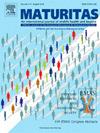更年期和子宫内膜异位症
IF 3.9
2区 医学
Q2 GERIATRICS & GERONTOLOGY
引用次数: 0
摘要
子宫内膜异位症只影响育龄妇女的观念已经发生了转变,人们开始关注其在绝经后患者中的表现。尽管人们开始意识到这一点,但有关绝经后子宫内膜异位症的文献资料仍然十分匮乏,其发病率、临床意义、最佳治疗策略和预后都存在不确定性。绝经期患者的子宫内膜异位症临床表现缺乏特异性,疼痛可能在生命的任何阶段发作。绝经后无症状子宫内膜异位症的主要治疗方法仍然是手术切除,既能达到诊断和治疗目的,又能降低并发恶性肿瘤的风险。由于绝经后妇女可能有绝经激素治疗禁忌症,而且复发和恶变的风险较高,因此治疗绝经后妇女的子宫内膜异位症是一项挑战。然而,对于患有子宫内膜异位症或有此病史的女性是否适合绝经激素治疗,目前还缺乏确凿的数据。目前的建议倾向于优先选择联合绝经激素治疗配方或替勃龙,而不是纯雌激素疗法,因为它们潜在的恶性肿瘤风险较高。患有子宫内膜异位症的绝经后妇女患骨质疏松症和心血管疾病的风险可能会增加,这可能与绝经年龄较早的手术史有关,但还需要进行更多的研究。这篇叙述性综述总结了现有的文献,对子宫内膜异位症与绝经之间错综复杂的联系进行了深入探讨,阐明了发病机制、症状、肿瘤风险、诊断和治疗。本文章由计算机程序翻译,如有差异,请以英文原文为准。
Menopause and endometriosis
The shift in paradigm from the belief that endometriosis exclusively affects women of reproductive age has brought attention to its manifestation in postmenopausal patients. Despite this emerging awareness, there remains a dearth of information in the literature regarding postmenopausal endometriosis, with uncertainties surrounding its prevalence, clinical significance, optimal management strategies, and prognosis. Clinical manifestations of endometriosis in menopausal patients lack specificity, with pain onset possible at any stage of life. The primary approach for symptomatic postmenopausal endometriosis continues to be surgical excision, serving both diagnostic and therapeutic purposes while mitigating the risk of coexisting malignancies. Managing the disease in postmenopausal women presents challenges due to possible contraindications for menopausal hormone therapy and the elevated risk of recurrence and malignant transformation. However, conclusive data regarding the appropriateness of menopausal hormone therapy in women with endometriosis or a history of the disease are lacking. Current recommendations lean towards prioritizing combined menopausal hormone therapy formulations or tibolone over estrogen-only therapies due to their potentially higher malignancy risk. The possible increased risk of osteoporosis and cardiovascular disease in postmenopausal women with endometriosis is likely linked to a history of surgical menopause at an earlier age, but more research is warranted. This narrative review summarizes the available literature and provides insights into the intricate connection between endometriosis and menopause, shedding light on pathogenesis, symptoms, oncologic risk, diagnosis, and treatment.
求助全文
通过发布文献求助,成功后即可免费获取论文全文。
去求助
来源期刊

Maturitas
医学-妇产科学
CiteScore
9.10
自引率
2.00%
发文量
142
审稿时长
40 days
期刊介绍:
Maturitas is an international multidisciplinary peer reviewed scientific journal of midlife health and beyond publishing original research, reviews, consensus statements and guidelines, and mini-reviews. The journal provides a forum for all aspects of postreproductive health in both genders ranging from basic science to health and social care.
Topic areas include:• Aging• Alternative and Complementary medicines• Arthritis and Bone Health• Cancer• Cardiovascular Health• Cognitive and Physical Functioning• Epidemiology, health and social care• Gynecology/ Reproductive Endocrinology• Nutrition/ Obesity Diabetes/ Metabolic Syndrome• Menopause, Ovarian Aging• Mental Health• Pharmacology• Sexuality• Quality of Life
 求助内容:
求助内容: 应助结果提醒方式:
应助结果提醒方式:


